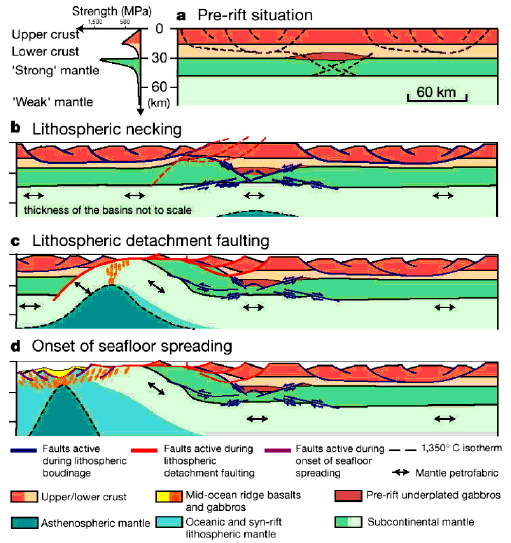| CONTINENTAL BREAKUP | |||||||
 |
|||||||
| Geometric aspects of continental breakup: How do continents break ? | |||||||
| Volcanic passive margins vs amagmatic passive margins - Active and passive rifting involve sub-continental mantle (SCM) with contrasted temperature. The hot SCM associated with active rifttng implies that continental extension and break-up is associated with voluminous volcanism leading to the formation of "Volcanic Passive Margins". Deformation and partial melting feed each other. Thermal softening of the crust above hot mantle favour strain localisation around these "hot spots". In turn extensional deformation induces the exhumation and decompression melting of the SCM. Because of this feedback volcanic passive margins are narrower than "Sedimentary Passive Margins" commonly associacted with passive rifting. NB: Volcanism and Sedimentation occurs in both dynamic mode. In Active Rift it volcanism is the main feature. |
|||||||
| Example of amagmatic margin (From Withmarsh et al., 2001) - a- Pre-rift situation with four-layer rheology and crust locally thickened by pre-rift underplated gabbro (right-hand side of model is fixed). b- Initially the upper mantle, the strongest part of the lithosphere, thins (“necks”) beneath the gabbros where it is weakest, allowing the asthenosphere to rise. c- Later, rifting is localized at the margin of the relatively weak unextended, or only slightly extended, crust. d- The asthenosphere ascends close to the surface and mid-ocean-ridge basalt melts were intruded into, and even extruded onto, sub-continental mantle. Deeper mantle layers are exhumed oceanward. Eventually, increasing melt production leads to the onset of seafloor spreading. |
|||||||